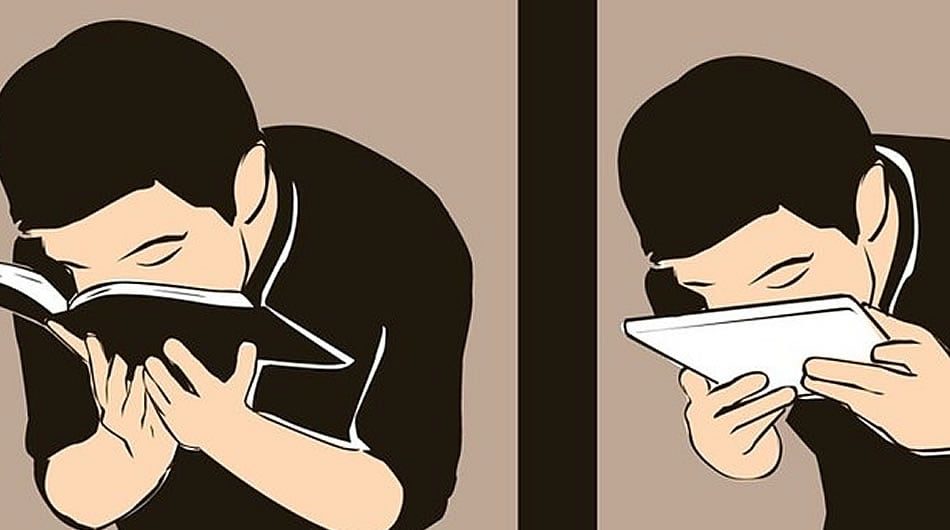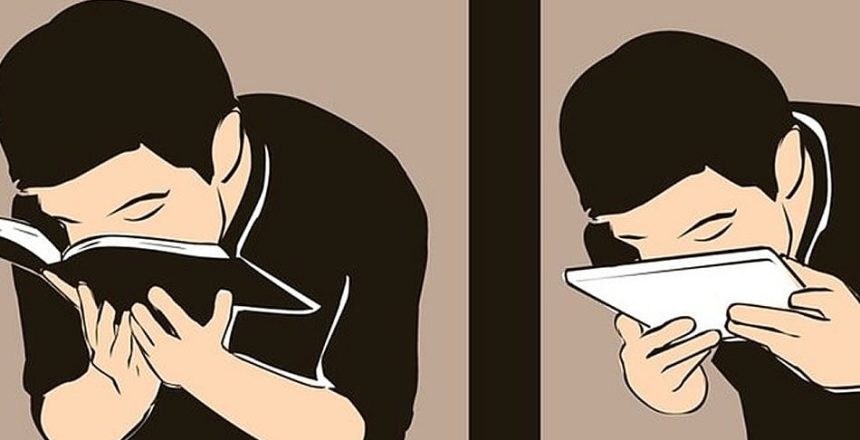Printed media simply can’t keep up with the speed and findability of digital; by the time news has been committed to paper, it’s already old. Digital content feeds the consumer demand for immediate information or entertainment at little or no cost to the reader. Without the need for printed press processes, the production time and costs for digital content can be reduced.

The preference for digital convenience
When you want to check a date do you pull out a diary or slide-open your smartphone? How about buying a newspaper: do you trudge to your local shop to buy a printed copy or simply swipe online to see the latest headlines?
The vast majority of individuals choose the convenience and speed of digital over the traditional printed options.
These preferences are now being instilled from a young age; our five years olds can navigate around a computer keyboard with ease yet can barely write their name with a pen.
Considering this, isn’t the demise of print a mere inevitability, a dinosaur that is dying slowly as its more dynamic offspring ruthlessly pushes past?
Surprising though it may seem, all the facts point to a new future where print and digital co-exist in harmony, complementing the function of each other without jostling for market position.
The drive towards digital
There’s no question that to be successful you have to think digital; clinging onto printed marketing and sales materials will never enable you to reach the market as quickly or as responsively as digital channels.
One of the defining needs for the modern world is immediacy and accessibility; if your audience can’t find what they want, when they want, then they will turn to another source. The evolution of the internet means there is now a wealth of information on tap around the clock – for free. Even premium digital content that requires a subscription is often cheaper than its printed equivalent.
Printed media simply can’t keep up with the speed and findability of digital; by the time news has been committed to paper, it’s already old. Digital content feeds the consumer demand for immediate information or entertainment at little or no cost to the reader. Without the need for printed press processes, the production time and costs for digital content can be reduced.
The complementary position for print
With such an appetite for digital consumption, it may seem unthinkable that printed media could ever compete. Yet printed media can offer something different – qualities which complement digital media without losing to it in a head-to-head battle.
For many decades, new inventions have arrived which held the potential to herald the death of existing products, methods and systems. In the 1880s the ice cutting industry of Northeast USA met its demise during the invention of the refrigerator. Yet there are just as many examples where an innovation shift has offered the chance to re-define markets and audiences, allowing both to co-exist peacefully.
This is unquestionably the case for printed media; if it is to survive the digital onslaught, it needs to find a different path and identify uses that are uniquely distinct.
The future of print
So with digital media able to tick so many boxes – and fulfil consumers’ needs quickly, cheaply and easily – what’s left for printed media to claim as its own?
There are a surprising number of reasons why printed media will continue to be in demand:
Visibility
When it comes to marketing, visibility may not seem like an obvious weakness of digital media but it relies on consumers being in the same spaces online as your brand. Increased exposure – for example, banner or pay-per-click advertising, come at a cost.
Status symbols
Certain brands also have a desirable presence and consumers clamour to be seen with them because of the qualities they bestow on the user. Newspapers and books are the perfect example of this; a shelf full of sought-after and fascinating books is an instant indication of an individual’s worth. Sneaking a peek at a person’s e-reader is never going to have the same impact. The right kind of status symbols has always been in demand and media is no exception; consumers will always be eager to benefit from the osmosis effect of high-quality print.
Reading in the moment
Perhaps high quality is where printed media should be aiming; squinting at a screen and smearing greasy finger-marks across an iPad doesn’t have the same decadent feel to relaxing with the Sunday papers over croissants and coffee.
Reading a printed book is a delicious sensory delight; the smell of newly-bound pages, the feel of crisp paper on your fingertips and the ability to quite literally bury your head can never be recreated with the sterile copy offered by an e-reader.
E-readers are undeniably popular, and understandably so, but that doesn’t mean books will never be in demand. Consumers may pick and choose what media they want but the chances are both print and digital will be included in their consumption for different preferential reasons.
A hybrid future
It’s easy to see how no single channel can satisfy an ever-demanding market and that for many a hybrid solution is the answer.
With print and digital platforms satiating different needs, there’s no reason why both can’t co-exist together, helping to create a truly fulfilling solution.



